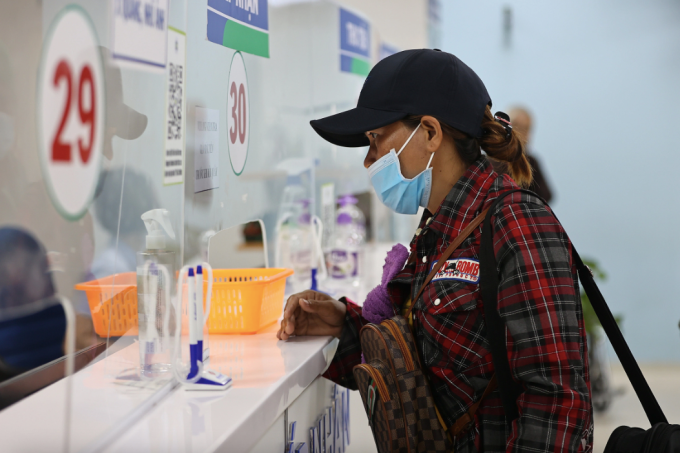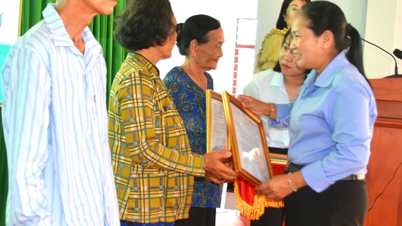
This list of 62 diseases includes: infectious diseases, cancers, metabolic disorders, lysosomal storage disorders, neurological diseases, cardiovascular diseases, pulmonary diseases, skin diseases, congenital malformations, anti-tuberculosis drug resistance, war sequelae and organ transplant cases.
Currently, the health care system is divided into three professional levels: initial, basic and advanced, instead of the previous four levels (central, provincial, district, communal). The level of health insurance benefits for patients ranges from 80% to 100% depending on the regulations on the card.
From July 1, the Law amending and supplementing a number of articles of the Law on Health Insurance (HI) will take effect, expanding the benefits for insurance participants. Accordingly, people with 62 rare and serious diseases are allowed to go to a different hospital without a referral letter, and still enjoy 100% of the HI payment.
When diagnosed at the primary level, patients with these diseases can go directly to a specialized facility without a referral letter. Even if they go to a specialized facility and are diagnosed with a disease on the list, they will still enjoy 100% of their health insurance benefits from the first visit. However, health insurance does not cover services outside the list (in case the patient registers for additional examination).
Ms. Tran Thi Trang, Director of the Health Insurance Department, said that specific and strict regulations on these diseases will help reduce the burden on specialized medical facilities, while balancing the Health Insurance Fund and ensuring the rights of seriously ill patients. Because if the list is expanded to include all cancers or non-communicable diseases (hypertension, diabetes), large hospitals will be overloaded due to the large number of patients.
For example, cancer has more than 1,000 disease codes, but only a few diseases such as malignant tumors of the pancreas, thymus, brain, spinal cord... are allowed to cross the line.
Similarly, with diabetes, only people with serious complications such as grade 2 foot ulcers, stage 3 or higher chronic kidney disease, or many other complications such as cardiovascular, eye, or neurological complications can be transferred to a specialized level.
Deputy Minister of Health Tran Van Thuan also said that the regulation to limit crossing the line is to reasonably divide the flow, avoiding affecting the rights of other seriously ill patients or emergency cases.
Previously, people with incurable diseases often could not be treated at the commune or district level, but still had to go through the transfer procedures to enjoy health insurance, causing inconvenience and wasting time. Many people did not have enough patience to wait and chose to have medical examination services, leading to loss of insurance benefits. With the new regulation, patients can go directly to specialized medical facilities, helping to save time, avoid complicated procedures as well as ensure health insurance benefits.
Below are specific diseases that are allowed to cross the line:
| Group | Specific name |
| Tuberculosis and fungal infections | Tuberculous meningitis (G01*); tuberculous meningitis (G07*); other tuberculosis of the nervous system; tuberculosis of the nervous system, unspecified (G99.8*); pulmonary mycobacterial infection; acute pulmonary histoplasma capsulatum infection; acute pulmonary blastomycosis; pulmonary paracoccidioidomycosis; pulmonary sporotrichosis (J99.8*); invasive pulmonary aspergillosis; pulmonary cryptococcosis; pulmonary mucormycosis; disseminated mucormycosis. |
| Cancer pathology | Malignant neoplasm of the pancreas; malignant neoplasm of the thymus; malignant neoplasm of the heart, mediastinum and pleura; malignant neoplasm of bone and articular cartilage of other and unspecified sites; malignant neoplasm of the meninges; malignant neoplasm of the brain; malignant neoplasm of the spinal cord, cranial nerves and other parts of the central nervous system; secondary malignant neoplasm of the brain and meninges; malignant neoplasms of the lymphoid, haematopoietic and related tissues. |
| Rare metabolic disease | Myelodysplastic syndromes; other forms of bone marrow failure; other thrombophilias (antiphospholipid syndrome); hemophagocytic lymphohistiocytosis associated with infection; insulin-dependent diabetes mellitus (with multiple complications); non-insulin-dependent diabetes mellitus (with multiple complications); disorders of aromatic amino acid metabolism; disorders of branched-chain amino acid metabolism and fatty acid metabolism; other disorders of amino acid metabolism |
| Neuropathy | Lysosomal storage disorders (Pompe disease, MPS, Gaucher disease, Fabry disease); disorders of copper metabolism (including Wilson's disease); amyloidosis; recurrent depressive disorder; obsessive-compulsive disorder; encephalitis, myelitis, and encephalomyelitis; multiple sclerosis; Devic's neuromyelitis optica; myasthenia gravis; retinopathy of prematurity; heart failure; toxic epidermal necrolysis (Lyell/Steven Johnson). |
| Post-operative and other pathologies | Postcardiac surgery syndrome; other postcardiac surgery dysfunction; other interstitial lung diseases; lung and mediastinal abscesses; pyothorax (severe lung infection); Crohn's disease (regional enteritis); pemphigus; reticular vasculitis; febrile neutrophilic dermatosis (Sweet's syndrome); systemic lupus erythematosus with visceral involvement; neonatal diabetes; other congenital malformations of the brain; other congenital malformations of the spinal cord. |
| Congenital defects and sequelae | Group of congenital malformations of the circulatory system; congenital deformities of the hip joint; resistance to anti-tuberculosis drugs(s); sequelae of war activities (sequelae due to war wounds); status of organ and tissue grafts. |
Source: https://baohaiduong.vn/62-benh-hiem-ngheo-dieu-tri-vuot-tuyen-van-duoc-bao-hiem-y-te-tra-100-413874.html






































































































Comment (0)